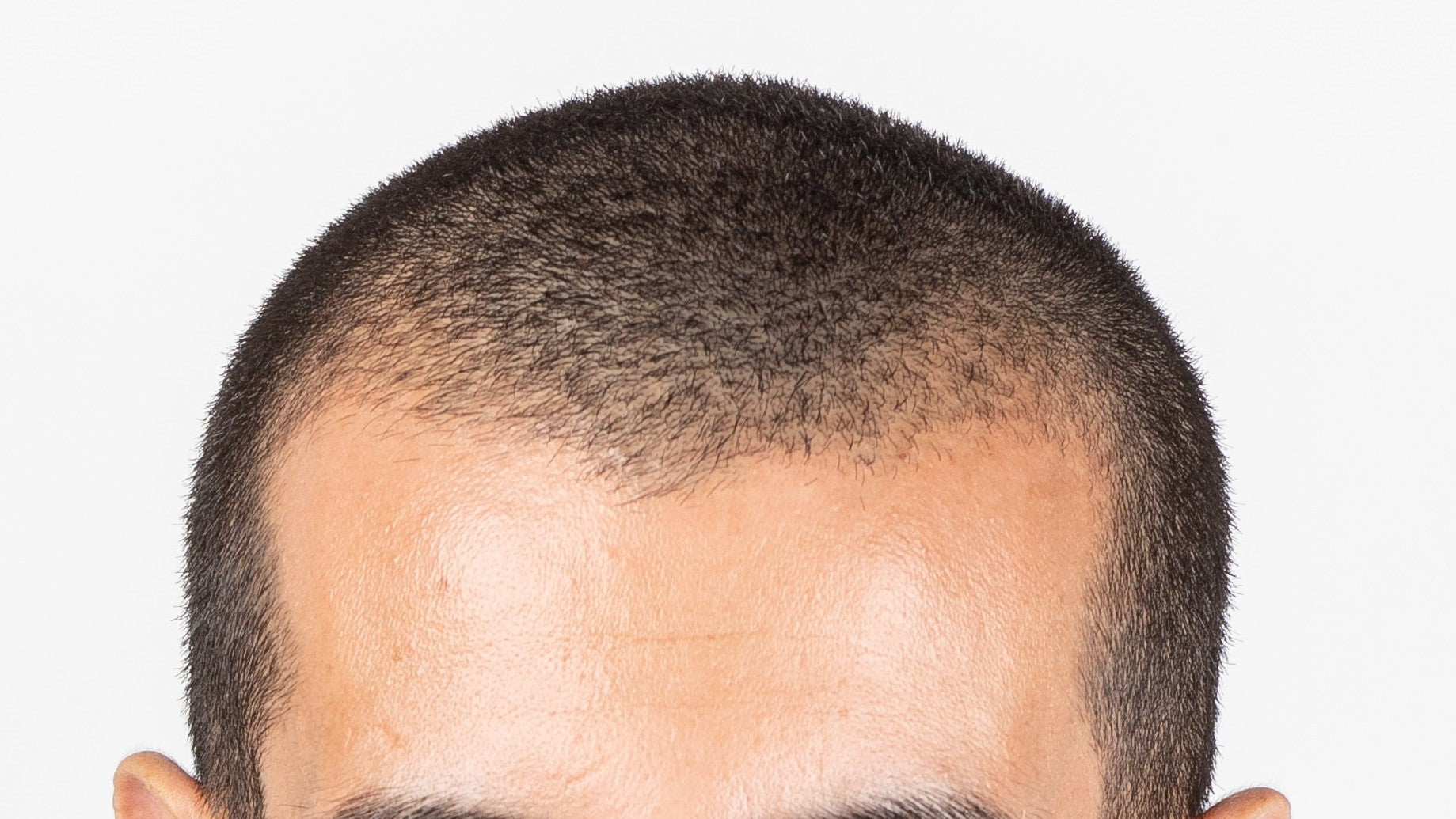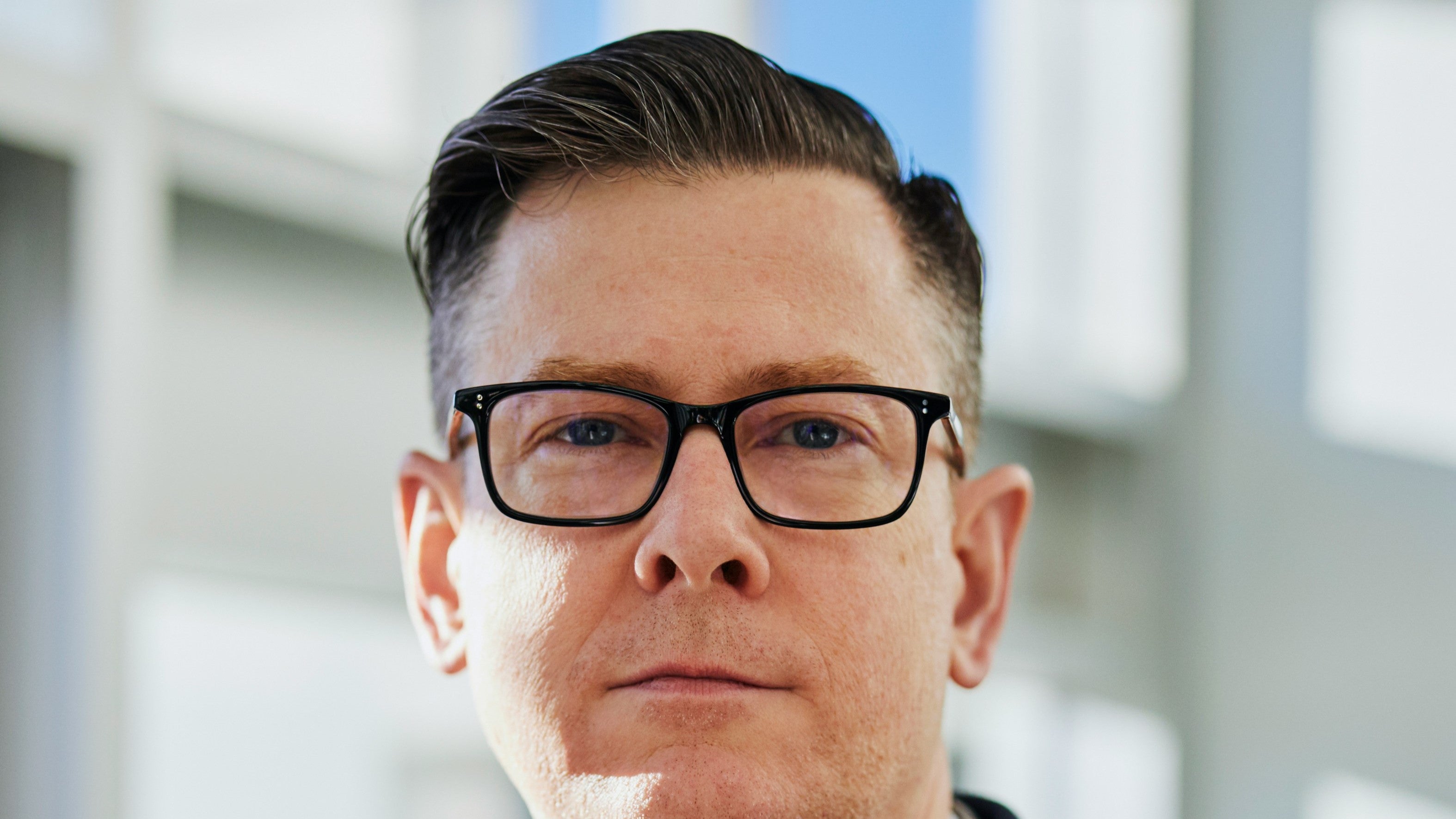Is receding hairline, once a source of insecurity, now being rebranded as the “mature hairline”?
False. A mature hairline, a receding hairline, and baldness are completely different and require different approaches.
We'll focus on mature hairline, how to tell, what it looks like, and how it compares with other hairlines.
Whether you choose to embrace it with pride or looking to know maturing hairline treatment options, we will cover them all in this article.
Table of content
What is a mature hairline?

A mature hairline refers to the natural recession of the hairline that occurs as a person ages, typically starting in the late teens or early twenties. It is characterized by a gradual, even recession of the frontal hairline, creating a more defined and pronounced forehead area, which is considered a normal part of the aging process for most individuals.
As your leading source for hair health information over the past 4 years, we never compromise on accuracy. When it comes to your health, you deserve information you can truly rely on - and earning your trust is our top priority.
Here's how Scandinavian Biolabs ensures every piece of content meets the highest standards of accuracy and integrity:
- Credentialed Experts: Our reviewers are actively practicing doctors and medical researchers
- Stringent Reviews: Content undergoes rigorous editing by subject specialists and review by a practicing doctor.
- Evidence-Based: We rely on well-established research from trusted scientific sources like peer-reviewed journals and health authorities.
- Full Transparency: Our editorial standards, writer credentials, reviewer credentials, correction process, and funding are all publicly documented.
- Independent Voice: While we do promote products, we operate in a vacuum to business operations. Our main goal is just an unwavering commitment to providing medically-sound guidance.
You can count on Scandinavian Biolabs to consistently deliver the trustworthy health information you deserve. Read our Editorial Standards.
What causes a maturing hairline?
The cause of a mature hairline is an inherited predisposition to increased sensitivity of hair follicles in the frontal scalp region to DHT.
As DHT levels rise during and after puberty, they bind to these follicles and very slowly shorten them, making a receding hairline while maintaining its characteristic arc shape.
Genetics determines whether this follicular miniaturization will occur to create the balanced rhythm of a mature hairline.
In more detail, the biology of a mature hairline involves a combination of genetics, hormonal changes, and aging:
Genetics
Your genetic makeup largely dictates the pattern and timing of your hairline maturation. If your family has a history of having mature hairlines, you might likely experience similar patterns.
Hormonal Changes
Hormones, especially androgens like testosterone, significantly influence hair growth. Testosterone is converted into dihydrotestosterone (DHT), which can cause the hair follicle, particularly around the forehead and temples, to shrink. This process leads to your juvenile hairline/maturing hairline.
Aging Process
As you age, the growth cycle of hair follicles alters. The anagen (growth) phase shortens, resulting in thinner and shorter hair strands, contributing to the appearance of a maturing hairline.
Environmental and Health Factors
Nutritional deficiencies, health status, and environmental exposures can also influence the health and appearance of your maturing hairline.
What does a mature hairline look like?
A mature hairline is characterized by a gradual, even recession of the frontal hairline in a symmetrical "M" or "V" shape.
This is typically called a M shaped hairline.
The hairline recession is subtle, pulling back only a centimeter or two from the original hairline.
Hair remains full on the top and back of the head, with only the frontal hairline receding as a natural part of the aging process.
Here are some pictures of mature hairlines for example:




How to tell if you have a mature hairline?
To tell if you have a mature hairline:
- Look for a gradual, even recession of your frontal hairline
- Your hairline forms a defined "M" or "U" shape across your forehead
- You have minimal hair loss or bald spots on the top of your head
- The recession started in your late teens or early 20s
- You don't have rapid hair loss, but a stabilized hair loss instead.
A maturing hairline is a normal part of aging for many men, unlike more severe thinning or baldness.
What is the difference between maturing hairline, receding hairline, and balding hairline?
The terms "maturing hairline," "receding hairline," and "balding hairline" are often used interchangeably, but they represent distinct stages of hair loss.
Distinguishing between these conditions is crucial for determining the appropriate course of action:
Maturing Hairline:
- A maturing hairline is a natural and gradual process that affects most men as they age.
- It typically begins between the ages of 17 and 30, but the timeline can vary.
- The hairline slowly recedes, forming a more defined "M" shape, but it does not travel more than an inch above the juvenile hairline.
- There is no noticeable thinning or hair loss around the rest of the scalp.
- A maturing hairline is considered a normal part of the aging process and does not necessarily indicate baldness.
Receding Hairline:
- It is often a precursor to male pattern baldness (androgenetic alopecia) or can be caused by various factors such as genetics, hormonal changes, medications, illness, stress, or lifestyle habits.
- The hairline recedes significantly, typically more than an inch above the juvenile hairline, exposing a larger portion of the forehead and scalp.
- The recession may occur in an "M" shape, "U" shape, or an irregular pattern.
- The hair around the receding hairline may appear thinner, with visible scalp exposure or miniaturized hair strands.
- Both men and women can experience a receding hairline, but it is more common in men.
- There are treatments available for a receding hairline, but identifying the underlying cause is essential.
Balding Hairline:

- A balding hairline is an advanced stage of male pattern baldness (androgenetic alopecia), which is the most common form of hair loss in men.
- The Norwood Scale, developed by Dr. James Hamilton and Dr. O'Tar Norwood, is a classification system that helps determine the stage of balding.
- In the early stages (Norwood Stages 2-3), the hairline recedes significantly, forming an "M" or "U" shape.
- As the condition progresses (Norwood Stages 4-7), hair loss becomes more severe, with thinning or balding on the crown and top of the head, and the hairline may eventually recede to a thin ring around the sides.
- Baldness is almost complete at the front and top of the head in advanced stages.
- While there can be various causes of a balding hairline, male pattern baldness is the most common and is primarily influenced by genetics and hormones.
It's important to note that while a maturing hairline is a normal aging process, a receding hairline or balding hairline may indicate an underlying condition that requires medical attention or treatment.
You can also have frontal fibrosing alopecia which requires different medical attention.
How to manage your mature hairline?
To manage your mature hairline, try these hair restoration and hair regrowth ways:
- Use a hair growth product
- Hair transplant
- Medical hair loss treatment drugs
- Cosmetic surgery
- Focus on your facial hair
- Draw attention away from your hair
We assume that you are looking for a more targeted fix, not a holistic approach like switching up your diet, going to sleep better, or managing your stress levels. It remains important that you adopt these changes when you can since they create the foundation for your hair health.
Use a hair growth product

Not just any, products that can help address for your mature hairline.
That's our Hair Growth Routine, designed to nurture and rejuvenate. Crafted from potent bioactive ingredients, this routine is your ally in stimulating healthy hair growth while being gentle on your scalp.

Our goal is straightforward: to support your hair's vitality and your confidence. Our products are backed by clinical studies and a money back guarantee so you can focus on getting your hairline back.
Tailored for those who demand an science-backed but natural approach to help reduce hair loss and support hair growth.
Hair transplant
For those seeking a more permanent solution, hair transplantation can be an option for managing a mature hairline or uneven hairline.
This procedure involves transplanting hair follicles from the back or sides of the scalp to the receding hair areas, fixing your entire hairline.
There are two hair transplant methods: FUE hair transplant and FUT hair transplant.
While effective, hair transplants are typically more expensive and invasive than non-surgical options. They also require a lengthy recovery process and ongoing maintenance.
It's crucial to choose a reputable, experienced surgeon and to have realistic expectations.
Factors like the extent of hair loss, available donor hair, and individual healing capacity can influence the outcome.
Medical hair loss treatment drugs
Medical drugs like minoxidil (Rogaine) and finasteride (Propecia) can be effective options for managing mature hairlines (also makes a great receding hairline treatment)
Minoxidil is a topical solution that stimulates healthy hair growth and can help regrow hair on the hairline and crown.
Finasteride is an oral medication that blocks the production of DHT, a hormone linked to male pattern baldness (androgenetic alopecia).
While results vary, these products can slow or reverse hair thinning and hair loss when used consistently.
It's important to consult a dermatologist for proper guidance and to manage expectations, as individual responses may differ.
Regular use over several months is often required to see noticeable improvements.
Cosmetic surgery
A taboo subject still for many men, but also something that many men have secretly undergone, cosmetic surgery can really shift the focus away from your hairline and into better features.
A whole host of potential surgeries to pick from including, but not limited to: eyebrow transplant, facial fat grafting, beard transplant.
Focus on your facial hair
Grooming your facial hair can be an excellent way to manage and enhance your mature hairline.
A well-trimmed beard or goatee can help balance out your features and draw attention away from a receding hairline.
Opt for styles that complement your face shape and personal style.
For example, a fuller beard can create the illusion of a stronger jawline, while a neat goatee can elongate your face.
Experiment with different lengths and shapes to find the most flattering look.
Proper grooming and maintenance are essential for a polished appearance.
Regular trimming, shaping, and conditioning can keep your facial hair looking its best.
Draw attention away from your hair
While a mature hairline is nothing to be ashamed of, sometimes a little redirection can boost confidence.
One strategy is to draw attention away from your hair and towards other features.
Wearing bold, statement accessories like glasses, ties, or watches can create focal points that divert the eye.
Dressing stylishly and investing in well-fitted, quality clothing can also help you feel more put-together and self-assured.
Experimenting with different necklines, such as V-necks or open collars, can elongate your face and shift the focus.
Finally, maintaining good posture and a confident demeanor can make any look more attractive.
Embracing your maturing hairline is the ultimate goal, but a few strategic styling choices can help smooth the transition.
FAQs
Is a mature hairline at 20 normal?
A mature hairline starting to form at age 20 can be considered normal.
Many men notice their hairlines beginning to recede in their late teenage years and early 20s as a natural part of the maturing process.
As long as the recession is gradual and symmetrical, it's typically not cause for concern. You're likely not balding at 20.
Can your hairline mature at 13?
It's possible but less common for hairline maturation to start that early at age 13.
For most boys, hairline changes don't typically begin until later in the teenage years around 16-18 years old or early 20s.
If a noticeable recession is occurring before 16, it could be a sign of early male pattern hair loss and it's best to check with a dermatologist.
At what age does the hairline recede?
Most men will first notice their receding hairline in their late teens to mid-20s as a normal part of the aging process. However, there is a wide range of normal.
Some experience a mature hairline developing gradually even in their 30s or 40s.
Anything after 50 is still considered within the range of normal male pattern baldness.
If a significant recession begins during the early teenage years under 16, it may point to early onset genetics.
It's best to consult a doctor if changes occur unusually fast or seem abnormal.
Conclusion
As we pointed out, there is nothing inherently bad about having a maturing hairline. It's just a sign that you are growing and biological processes in your body are taking place.
A maturing hairline is a cosmetic term used to describe a man's receding hairline that occurs naturally with age. It is not the same as male pattern baldness (androgenic alopecia), which is a more severe and progressive form of hair loss. A maturing hairline creates a more defined and adult-looking forehead without significant thinning hair or baldness.
For some, ignoring this natural occurrence is a good idea, especially if looks don't matter a huge deal to you. You can rely on facial hair and cosmetic changes to draw attention away from your receding hairline.
However, for those who want to have a better, even hairline and push back the signs of hair loss, we have 3 potential ways you can try to fix your maturing hairline.
Either way you choose, the key is to be confident in yourself, no amount of hair serum will be enough to boost your attractiveness if you are not confident.
Read more:
- Post Finasteride Syndrome: Is It Real, Symptoms & Alternatives
- Am I Balding? AI Tool, Manual Diagnosis & Easy Ways To Fix It
- 50 Hair Dye Statistics Of 2024: The Surprising Trends and Facts You Need to Know
Reference
- nlm.nih.gov/pmc/articles/PMC4740347/
- nlm.nih.gov/pubmed/9951956
- nlm.nih.gov/pubmed/12196747
- nlm.nih.gov/pubmed/25842469
- nlm.nih.gov/pubmed/26058803





